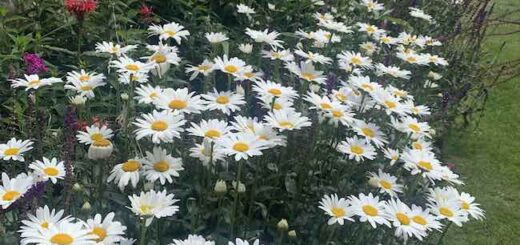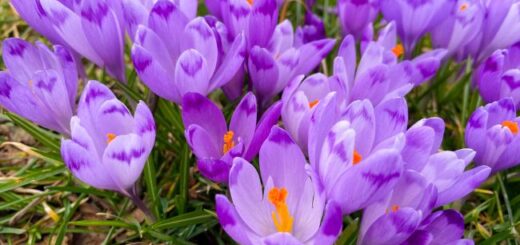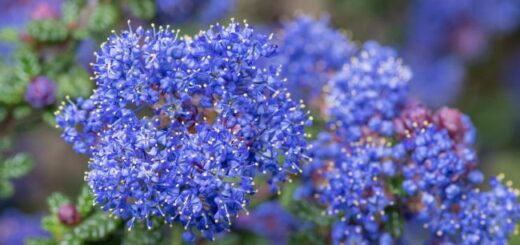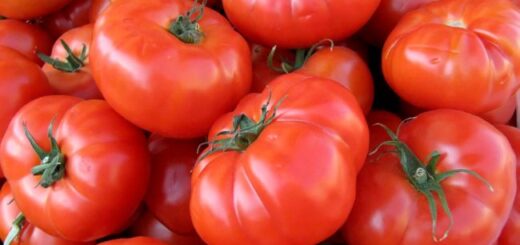GardenAdvice Weekly Gardening Calendar First Week in November
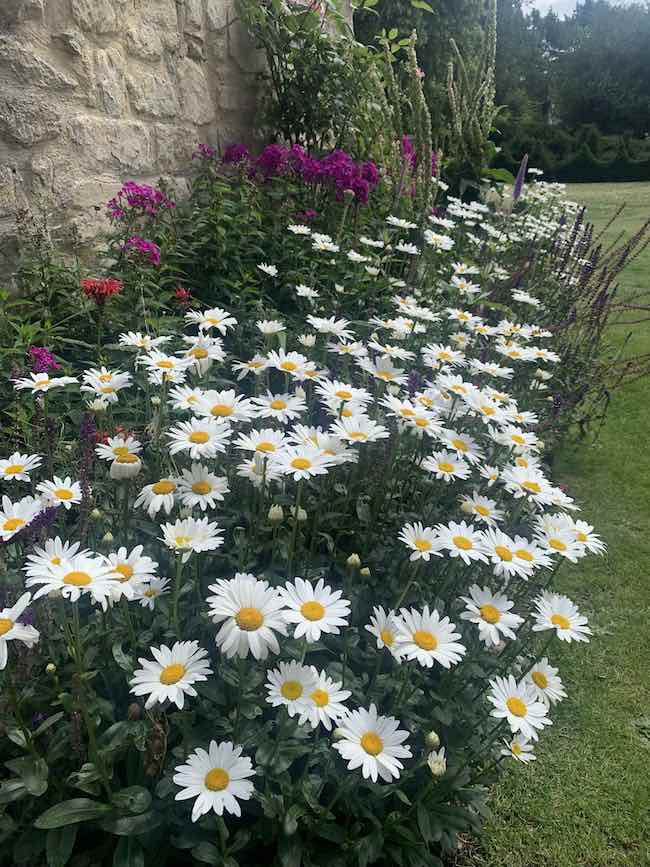
November marks the gentle shift from autumn into winter. The garden begins to rest, yet it remains full of essential tasks that prepare it for the coming spring.
This is the time to prune, plant, protect, and plan ahead — ensuring your garden weathers the cold months in good health.
Roses
Lightly prune your roses this month to reduce wind rock — the rocking motion that can loosen roots during winter gales. Remove any long, straggly stems and tie in loose shoots securely to their supports. This light pruning helps prevent damage while allowing air to circulate.
If you haven’t already, clear away fallen leaves around rose beds to reduce the risk of fungal diseases overwintering in the soil. Alternativery you can apply mulch over the top of the fallen leaves to cap off the fungal spores to help prevent the spread of disease such as black spot new spring.
Links:
Trees and Shrubs
November is one of the best months for planting and moving trees, shrubs, and climbers, especially bare-root varieties. The soil is still warm enough for roots to establish before the hardest frosts arrive. When planting, add plenty of compost or well-rotted manure to the planting hole and water well if the weather is dry.
Before winter storms arrive, check all stakes, ties, and supports. Make sure they are firm but not too tight around stems.
It’s also a good month to mulch newly planted specimens with compost, bark, or leaf mould. If you’ve gathered fallen leaves, stack them in a wire bin or perforated plastic sacks — they will break down into excellent leaf mould for next year.
Links:
Grow Your Own (Vegetables and Fruit)
With the vegetable patch largely cleared, take the opportunity to remove old crops and dig in green manure such as clover or ryegrass. If your soil is heavy clay, leave it rough-dug so winter frost can break it down naturally.
Prepare asparagus beds for spring — remove perennial weeds, enrich the soil, and ensure good drainage.
Check stored crops like potatoes, onions, and apples regularly for signs of rot.
Now’s the time to order seeds and bare-root fruit bushes. Fit grease bands on fruit trees to trap winter moths, and use netting to protect brassicas from pigeons.
Prune summer-fruiting raspberry canes and tie in new shoots.
Link:
Wildlife Care
As natural food dwindles, garden birds rely on feeders. Keep them clean and filled with seed, suet, and peanuts. Provide fresh water in a shallow dish or bird bath.
Leave seed heads, hollow stems, and leaf piles to offer shelter for insects, frogs, and hedgehogs.
Links:
- Feeding your garden’s birds
- Creating a wildlife shelter in your garden for birds and insects
- Shrubs that produce berries for garden wildlife
Gift Idea for Gardeners
A GardenAdvice One-Day Gardening Course makes a thoughtful Christmas gift. Perfect for gardeners of all levels, these courses cover pruning, soil care, plant selection, and more.
Visit:
Alan and Helen chat through the GardenAdvice Weekly Gardening Calendar First Week in November Audio File
The Audio Transcrpt
Alan 0:00
Okay, let’s unpack this weeks GardenAdvice gardening calendar. We are stepping into the first full week of November. And, you know, for a lot of people, this looks like garden downtime. Everything seems quiet, maybe a bit messy even, but the material we’ve looked at, it tells a very different story. This is timeof the month of preperation work, isn’t it?
Helen 0:15
That’s exactly right. It’s the perfect way to frame it. November is this critical but gentle transition. If you think about gardening as a long‑term investment, really the effort now is probably the highest‐yielding deposit you’ll make all year. So this deep dive, it’s basically your essential checklist, making sure the garden doesn’t just survive winter, but is, you know, perfectly set up for a fantastic spring, right?
Alan 0:40
So our mission today is to cut through that end‑of‑season feeling that fatigue and give you a really clear, concise guide. We want to show you exactly why November is the time to do that strategic pruning. Plan for the future, protect against hidden dangers and just plan ahead properly.
- See “Gardening tasks November” at GardenAdvice for this broader November focus. (gardenadvice.co.uk)
Helen 0:56
Yeah, and we’ve kind of broken down this prep work into three main areas, all interconnected. There’s maintaining the structure of your permanent plants—roses, trees, that sort of thing—then investing in your soil health for the long run, and finally, making sure your edibles, and crucially, your garden wildlife, get through the tough weather ahead.
Alan 1:14
And just to hook you in straight away, we’ve got a really critical bit of advice coming up. It’s about roses. Why just five minutes doing a light prune now could actually save them from disaster come January, serious root damage. Plus, we’ll get into the physics, which is fascinating, of how winter frost is basically the best free tool for improving heavy clay soil. It’s all preventative garden medicine. Spot on. Okay, let’s start with those structural plants, then trees, shrubs, and particularly roses, because they seem most vulnerable to winter winds and damage. The sources really stress a very specific, maybe unintuitive task for roses right now—a light prune. Why do we cut anything back now, before the main pruning later in winter?
Helen 1:55
When we talk roses now: At this stage the big danger we’re trying to avoid is something called wind‑rock. You see, when roses have those long, maybe straggly stems left over from summer, a winter gale turns them into levers, long levers, as the wind whips them about, the whole plant rocks back and forth, and that motion loosens the root ball right out of the soil.
Alan 2:19
Ah, so the plant literally becomes unstable, like a loose tooth.
Helen 2:23
Exactly like that. And that repeated rocking, it can snap off the fine feeder roots, let water pool around the base, causing rot, and ultimately it can kill the plant. So this light prune is strategic. You’re just shortening those levers, reducing the sail‑area if you like, which keeps the whole thing stable. And definitely tie in any long shoots left over too.
Alan 2:42
That makes total sense. You sacrifice a bit of growth now to make sure the foundations, the roots, survive the storms. And while we’re down there at the base of the roses, what about all those fallen leaves? They often carry disease spores right back to spot and things.
Helen 2:56
Yes, you absolutely have to deal with those. It’s key to preventing fungal diseases like black spot from taking hold when new growth appears in spring. You’ve basically got two main options, and both are perfectly valid. Option one: meticulously clear away every single fallen leaf from around the roses, physically remove those overwintering spores.
- See “How to – Autumn rose care” at GardenAdvice for details on autumn pruning and skip‑winter disease strategies. (gardenadvice.co.uk)
- Also “Notes on pruning your roses” for strategic light prune in Autumn. (gardenadvice.co.uk)
Alan 3:18
The tidy option. What’s the alternative—sounds like there might be a slightly lazier way?
Helen 3:23
Well, smarter perhaps. The alternative is to apply a really thick layer of mulch—could be bark chips, garden compost, or even leaf mold directly over the fallen leaves. You’re essentially putting a cap on them, sealing those fungal spores beneath a physical barrier so rain can’t splash them up onto the new shoots next year, right?
- See “How to – Rose care for the autumn” at GardenAdvice for mulch, leaf removal and disease prevention. (gardenadvice.co.uk)
Alan 3:40
Sealing them in—that’s a neat trick, preventative hygiene. Okay, moving on to the bigger stuff, trees and shrubs. I always kind of assumed spring was the main planting time. Why is November flagged as one of the best months, especially for bare‑root plants?
Helen 3:53
Two key things happening: dormancy and soil temperature. First: the plants are going dormant, or are already there—no leaves, minimal water needs. It means much, much less transplant shock when you dig them up and move them. Second: and this is critical, the soil is still holding on to warmth from summer.
- The “Care Notes on Winter Gardening Tasks (November Focus)” article at GardenAdvice hits exactly this. (gardenadvice.co.uk)
Alan 4:13
Okay, so even if the air feels chilly, the ground underneath is still relatively…
Helen 4:17
Warm, exactly. It’s still quite cosy down there, and that warmth is enough for the fine roots to start growing, to establish themselves a bit before the really hard, deep frosts hit. This gives bare‑root varieties, especially trees and shrubs, a huge head‑start compared to plants that sit in pots all winter.
Unknown Speaker 4:34
Makes sense. Get them settled before the freeze.
Helen 4:36
Just a quick check if you are planting or moving things. Make sure any stakes or ties are firm, but not too tight. Give them room to grow a bit and avoid rubbing damage in winter storms.
Alan 4:56
Good point. Okay, so we’ve secured the stuff above ground. Now we need to dive into probably the biggest investment you can make this month: the soil itself, especially in the veg patch, right?
Helen 5:18
Ah, but that messiness is actually a very clever, calculated strategy. It’s using physics to your advantage. See, if you’ve got that dense, heavy clay soil, you know how tough it is—sticky, poor drainage, hard to work. When you leave it in rough, large clods, over winter you maximise the surface‑area exposed to the weather. And winter brings freeze/thaw cycles.
- This relates well to GardenAdvice’s “Improving a heavy clay soil” article. (gardenadvice.co.uk)
Alan 5:36
Lots of them. Okay, talk me through the mechanism. How does frost actually break the clay down?
Helen 5:41
Water expands when it freezes, right, basic science. So water seeps into all the tiny cracks and pores within those big clods of clay. Then it freezes solid. That expansion exerts immense pressure from the inside, fracturing the dense clay structure. Then it thaws. Water seeps in again, freezes again, repeat. This natural weathering action fundamentally changes the soil structure. It creates a much finer, crumbly texture, what gardeners call tilth—completely for free. Nature does the hard digging for you.
Alan 6:12
That is brilliant—using thermodynamics to avoid back‑breaking digging.
Helen 6:17
It really is. And going back to the green manure you mentioned—yeah, digging that in isn’t just about adding vague ‘goodness’. If you’ve grown something like clover or rye grass, it’s doing several jobs. It protects the bare soil from being washed away by winter rains. It suppresses weeds. And if you use legumes like clover, they actually fix nitrogen from the air into the soil, free fertiliser for next year’s hungry crops.
Alan 6:38
Wow. Okay, so stabilising the soil structure and boosting fertility at the same time. November’s busy underground. This month also seems crucial for kind of building up your supplies for next year.
Helen 6:50
It is, yeah, especially thinking about leaves—you should definitely be mulching any newly planted things now with compost or bark, give them some protection. But look further ahead. Now is the absolute prime time to start making leaf‑mould.
Alan 7:04
Which is supposed to be much better than regular compost for improving soil structure, isn’t it?
Helen 7:08
Oh, far better. Leaf‑mould isn’t really about nutrients like manure. It’s a soil conditioner. Its structure is amazing. Just rake up all those fallen leaves—oak and beech are particularly good—and stack them in a simple wire‑mesh bin, or even just some old compost bags with holes punched in. Then just leave them. They rot down slowly into this beautiful dark crumbly stuff that’s fantastic for improving soil moisture retention and structure next year. It takes time—maybe a year or two—but it’s pure gold for the garden.
- For soil improvement and heavy clay focus see “How to deal with heavy clay soil in the garden”. (gardenadvice.co.uk)
Alan 7:38
Pure gold. I like that. Okay, here’s where it gets really interesting for the organised gardener: shifting from digging to logistics and planning. November is apparently peak ordering time.
Helen 7:48
Absolutely. This planning phase now is what separates the calm gardener from the frantic one come spring. But while you’re dreaming about next year’s plants, don’t forget about this year’s harvest. The advice is very clear. Regularly check any crops you have in storage—potatoes, onions, apples, whatever. Look carefully for any signs of rot or mould. That old saying, “one bad apple spoils the barrel” is literally true. Rot spreads incredibly fast in dark, confined storage.
Alan 8:18
Right. Vigilance is key there. And what specific growing projects need attention now before the ground gets too hard or frozen?
Helen 8:24
Asparagus beds need prepping. Now, if you have an established bed, or you’re planning one, you need to get in there before the cold really sets in. That means carefully removing any stubborn perennial weeds—couch grass, bindweed—they love asparagus beds. Then give the soil surface a good, heavy dressing of well‑rotted manure or rich compost. Asparagus is a long‐term crop, a big investment, and it needs that feed over winter.
Alan 8:47
Good tip for asparagus growers—and for everyone else planting new fruit, veg or flowers for next year.
Helen 8:53
Now is the time to order your seeds, especially if you want popular or slightly unusual varieties. They genuinely sell out fast. And crucially, get your orders in now for bare‑root fruit bushes, fruit trees and roses. If you wait until spring, the choice is often limited. Plants might be smaller and prices can be higher. Order now for delivery at the right planting time.
Alan 9:21
Right. Let’s pivot then to our third section: protecting the edibles you might still have growing and also, really importantly, looking after your garden wildlife.
Helen 9:28
Absolutely key tasks. First, for fruit trees—apples, pears, plums—you need to fit grease bands around the main trunk. These are sticky bands designed to trap the female winter moth. Fascinatingly, she can’t fly—she crawls up the trunk to lay eggs in the canopy. If we put that sticky band in her path now, we prevent potentially thousands of caterpillars hatching next spring and munching through buds and young fruit.
Alan 10:02
Brilliant—stopping the problem literally in its tracks before it even gets airborne. Clever. And then the brassicas—the kale, cabbages, sprouts still standing—they’re very vulnerable now too.
Helen 10:12
Very much so—mainly to pigeons. As food gets scarcer out in the fields, hedgerows and gardens, brassicas become prime targets. Netting is non‑negotiable. If you want to harvest anything, build proper, sturdy cages or frames covered securely with netting. No gaps—or they will find a way in and strip the plants bare in days.
Alan 10:32
Right—net fortress required. Okay, and one final pruning job mentioned for soft fruit before we get on to wildlife?
Helen 10:39
Yes. Summer‑fruiting raspberries: the canes that gave you fruit this past summer need cutting down now, right to the base. They won’t fruit again. Look at the new strong green canes from this year—those will fruit next summer. Select the best six to eight per plant and tie them into support wires. It stops wind damage and helps air circulation come spring.
Alan 11:05
Okay. Raspberries sorted. That brings us nicely to wildlife care. As the temperature drops and natural food sources disappear, birds, hedgehogs, beneficial insects—they start depending on us.
Helen 11:18
They really do. Gardeners play a huge part in that ecosystem. Two essentials for birds: food and water—with a focus on hygiene and energy. Keep feeders clean. Dirty feeders spread disease like salmonella. Use high‑energy food—seed mixes, peanuts, and especially suet blocks or fat balls.
- For broad “Late autumn tasks to get your garden ready for winter” including wildlife, see GardenAdvice. (gardenadvice.co.uk)
Alan 11:47
Why the big emphasis on fat?
Helen 11:51
It’s all about energy. Fat provides the most calories per gram—vital fuel to help birds maintain body temperature through long, cold nights. Food equals warmth. And don’t forget water. A shallow dish or bird bath kept ice‑free is just as critical as food.
Alan 12:14
Good point. And I love this final piece of advice we pulled out—it kind of gives permission for a bit of, well, strategic laziness?
Helen 12:21
Yes—it’s the “beneficial messiness” idea. We feel the urge to tidy everything up, but actually leaving seed heads on perennials provides food for birds like goldfinches. Hollow stems offer hibernation space for ladybirds, lacewings, solitary bees.
Alan 12:48
Ah—so habitat as well as food. And those piles of fallen leaves we were talking about earlier?
Helen 12:52
Exactly. Don’t clear every leaf. Rake some into a pile in a quiet corner—under a hedge or behind the shed. That becomes a five‑star hedgehog hotel. Frogs, toads, beetles and others will use it for insulation.
Alan 13:10
That’s wonderful. A little bit of managed messiness goes a long way for biodiversity. And just a quick practical note—we found the source material even suggested a GardenAdvice one‑day gardening course as a potential Christmas gift.
Helen 13:30
Definitely a thought. Courses cover pruning, soil care, plant selection. A great way to get ahead next year.
Alan 13:55
If you want the fastest, most immediate value from this deep dive, what are the two things to do right now?
Helen 14:00
Two quick wins. First, go to your roses and do that light prune we talked about. Shorten long stems to stop wind rock. Takes minutes, huge benefit. Second, if you have heavy clay soil, get out the spade and do rough digging now. Leave big clods. Let frost do the work over winter.
Alan 14:21
Be proactive now—reap the rewards next spring.
Helen 14:25
Exactly. A healthy, robust garden structure starts with these November jobs.
Alan 14:29
So what does this all mean then? We’ve heard how the smart gardener is surgically tidy in some ways—checking stored apples for rot, clearing diseased rose leaves. Yet also embraces beneficial messiness—leaving seed heads, creating leaf piles. So here’s the thought to leave you with:
How do you draw the line between necessary tidiness to protect plant health and the essential wildness that sustains your garden’s ecosystem?
Helen 15:15
Finding that balance—that equilibrium between order and nature—that’s the real art of putting your garden to bed for winter.
Alan 15:24
You now have your clear mission for the start of November. Happy garden prepping.
